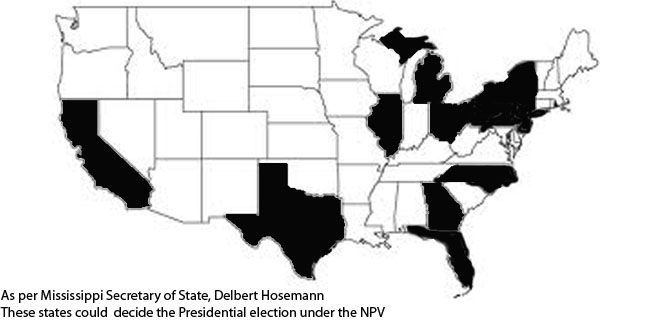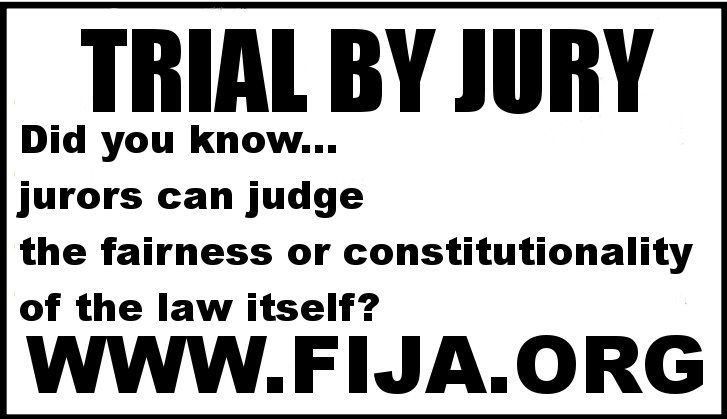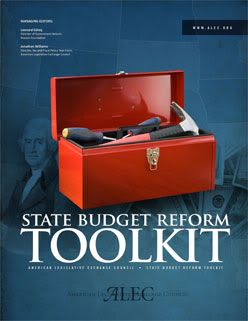**7.45pm** Due to a comment flood from one individual, comments for this post are closed.

All the electioneering can be done in the handful of states and all the union organizers can focus on the handful of states. The election will be decided by the liberal cities where the heaviest concentrations of people reside.
Back in 2006, Pere Du Pont wrote a short, but effective article highlighting the problems and the motives behind the National Popular Vote effort.
This article has disappeared from the archives of the Wall Street Journal, so I'm going to preserve it here because I am hearing rumblings that some Republicans have been fooled into falling for the plan:
Trash the 'Compact'
An attempt to circumvent the Electoral College is really an urban power grab
BY PETE DU PONT
Monday, August 28, 2006 12:01 a.m. EDT
For more than 200 years America has chosen its presidents as the Constitution provides: through the Electoral College. Traditionally, each state has cast its electoral votes--equal to its total representation in Congress--for the candidate who receives the most votes statewide.
But last week the California Senate passed legislation to award the state's Electoral College votes to the candidate who has received the most popular votes nationally--whether Californians chose him or not. A similar bill passed the Assembly on May 30, so it will soon be up to Gov. Arnold Schwarzenegger to sign or veto the bill. Such a bill also passed the Colorado Senate in April, part of a national effort to change the way we choose our presidents. The mandate doesn't take effect until enough other states sign on to provide a majority of electoral votes. If it were in effect in 2004, George W. Bush would have taken California's 55 electoral votes, even though John Kerry carried the state by a margin of nearly 10%.
It is an odd idea, an "interstate compact" switching the Electoral College votes of member states from their state's vote winner to the national vote winner. And the direct election of presidents would be a political, electoral, and constitutional mistake that would radically change America's election system.
First, the direct election of presidents would lead to geographically narrower campaigns, for election efforts would be largely urban. In 2000 Al Gore won 677 counties and George Bush 2,434, but Mr. Gore received more total votes. Circumvent the Electoral College and move to a direct national vote, and those 677 largely urban counties would become the focus of presidential campaigns.
Rural states like Maine, with its 740,000 votes in 2004, wouldn't matter much compared with New York's 7.4 million or California's 12.4 million votes. Rural states' issues wouldn't matter much either; big-city populations and urban issues would become the focus of presidential campaigns. America would be holding urban elections, and that would change the character of campaigns and presidents.
Second, in any direct national election there would be significant election-fraud concerns. In the 2000 Bush-Gore race, Mr. Gore's 540,000-vote margin amounted to 3.1 votes in each of the country's 175,000 precincts. "Finding" three votes per precinct in urban areas is not a difficult thing, or as former presidential scholar and Kennedy advisor Theodore White testified before the Congress in 1970, "There is an almost unprecedented chaos that comes in the system where the change of one or two votes per precinct can switch the national election of the United States."
Washington state's 2004 governor's race was decided by just 129 votes. A judge found 1,678 illegal votes were cast, and it turned out that 1,200 more votes were counted in Seattle's King County than the number of people recorded as voting. This affected just Washington state, but in a direct national election where everything hangs on a small number of urban districts, such manipulations could easily decide presidencies.
Third, direct election would lead to a multicandidate, multiparty system instead of the two-party system we have. Many candidates would run on narrow issues: anti-immigration, pro-gun, environment, national security, antiwar, socialist or labor candidates, for they would have a microphone for their issues. Then there would be political power seekers--Al Sharpton or Michael Moore--and Hollywood pols like Barbra Streisand or Warren Beatty. Even Paris Hilton could advance her career through a presidential campaign.
For such candidates to run under the present system is very difficult, for they have to win state by state electoral votes. But if all you need is national fame and fortune to win popular votes, many candidates would run and presidential campaigns would become unfocused, confused, and about political advocacy instead of presidential substance.
Finally, direct election would also lead to weaker presidents. There are no run-offs in the Interstate Compact--that would require either a constitutional amendment or the agreement of all 50 states and the District of Columbia--so the highest percentage winner, no matter how small (perhaps 25% or 30% in a six- or eight-candidate field) would become president. Such a winner would not have an Electoral College majority and therefore not be seen as a legitimate president.
So rather that trying to eviscerate the Electoral College, we should be embracing it. It was put in the Constitution to allow states to choose presidents, for we are a republic based on the separation of powers, not a direct democracy. And the Electoral College--just like the Senate--was intended to protect the residents of small states. As James Madison said, the Electoral College included the will of the nation--every congressional district gets an electoral vote--and "the will of the states in their distinct and independent capacities" since every state gets two additional electors.
And might not the direct-election Interstate Compact lead to other similar efforts? California's Sen. Dianne Feinstein says the Electoral College violates "one person, one vote," and so we should have direct election of the president. But the equal allocation of two senators to each state also violates "one person, one vote." Montana, with 900,000 people, gets two senators and so does California with 34 million, so Feinstein's logic would say that California should have 12 senators, and Maine, New Hampshire and Vermont should share just one among them.
Might not "one person, one vote" allow a national vote to amend the Constitution instead of requiring approval by three-quarters of the states? To restrict freedom of speech, or expand searches and seizures, or modify any of the Bill of Rights?
One wonders if the direct election of presidents is really the beginning of an effort to bring national government under the control of large and liberal states. Common Cause, a Washington-based lobbying group that describes itself as "promoting open, honest and accountable government," argues "how neatly it fits with American tradition." But it doesn't. It contradicts our constitutional republic's state and federal government sharing of powers. Choosing presidents is one of our states' powers, and we should not remove it to begin a centralized national American government.
Mr. du Pont, a former governor of Delaware, is chairman of the Dallas-based National Center for Policy Analysis. His column appears once a month.
Source: Wall Street Journal
Alternate: Internet Archive






























11 comments :
With the current state winner-take-all system of awarding electoral votes, winning a bare plurality of the popular vote in the 11 most populous states, containing 56% of the population, could win the Presidency with a mere 26% of the nation's votes!
But the political reality is that the 11 largest states rarely agree on any political question. In terms of recent presidential elections, the 11 largest states include five "red states (Texas, Florida, Ohio, North Carolina, and Georgia) and six "blue" states (California, New York, Illinois, Pennsylvania, Michigan, and New Jersey). The fact is that the big states are just about as closely divided as the rest of the country. For example, among the four largest states, the two largest Republican states (Texas and Florida) generated a total margin of 2.1 million votes for Bush, whil
e the two largest Democratic states generated a total margin of 2.1 million votes for Kerry.
Among the 11 most populous states in 2004, the highest levels of popular support, hardly overwhelming, were found in the following seven non-battleground states:
* Texas (62% Republican),
* New York (59% Democratic),
* Georgia (58% Republican),
* North Carolina (56% Republican),
* Illinois (55% Democratic),
* California (55% Democratic), and.
* New Jersey (53% Democratic).
In addition, the margins generated by the nation's largest states are hardly overwhelming in relation to the 122,000,000 votes cast nationally. Among the 11 most populous states, the highest margins were the following seven non-battleground states:
* Texas -- 1,691,267 Republican.
* New York -- 1,192,436 Democratic.
* Georgia -- 544,634 Republican.
* North Carolina -- 426,778 Republican.
* Illinois -- 513,342 Democratic.
* California -- 1,023,560 Democratic.
* New Jersey -- 211,826 Democratic.
To put these numbers in perspective, Oklahoma (7 electoral votes) alone generated a margin of 455,000 "wasted" votes for Bush in 2004 -- larger than the margin generated by the 9th and 10th largest states, namely New Jersey and North Carolina (each with 15 electoral votes). Utah (5 electoral votes) alone generated a margin of 385,000 "wasted" votes for Bush in 2004. 8 small western states, with less than a third of California’s population, provided Bush with a bigger margin (1,283,076) than California provided Kerry (1,235,659).
The National Popular Vote bill would guarantee the Presidency to the candidate who receives the most popular votes in all 50 states (and DC).
The National Popular Vote bill would change existing state winner-take-all laws that award all of a state’s electoral votes to the candidate who get the most popular votes in each separate state (not mentioned in the U.S. Constitution, but since enacted by 48 states), to a system GUARANTEEING THE MAJORITY OF ELECTORAL COLLEGE votes for, and the Presidency to, the candidate getting the most popular votes in the entire United States.
The National Popular Vote bill preserves the constitutionally mandated Electoral College and state control of elections. It ensures that every vote is equal, every voter will matter, in every state, in every presidential election, and the candidate with the most votes wins, as in virtually every other election in the country.
Under National Popular Vote, every vote, everywhere, would be politically relevant and equal in every presidential election. Every vote would be included in the state counts and national count. The candidate with the most popular votes in all 50 states and DC would get the 270+ Electoral College votes from the enacting states. That majority of Electoral College votes guarantees the candidate with the most popular votes in all 50 states and DC wins the presidency.
National Popular Vote would give a voice to the minority party voters in each state. Now their votes are counted only for the candidate they did not vote for. Now they don't matter to their candidate.
And now votes, beyond the one needed to get the most votes in the state, for winning in a state are wasted and don't matter to candidates. Utah (5 electoral votes) alone generated a margin of 385,000 "wasted" votes for Bush in 2004. 8 small western states, with less than a third of California’s population, provided Bush with a bigger margin (1,283,076) than California provided Kerry (1,235,659).
With National Popular Vote, every vote, everywhere would be counted equally for, and directly assist, the candidate for whom it was cast.
Candidates would need to care about voters across the nation, not just undecided voters in a handful of swing states. The political reality would be that when every vote is equal, the campaign must be run in every part of the country.
With the Electoral College and federalism, the Founding Fathers meant to empower the states to pursue their own interests within the confines of the Constitution. The National Popular Vote is an exercise of that power, not an attack upon it.
The Electoral College is now the set of dedicated party activists who vote as rubberstamps for their party’s presidential candidate. That is not what the Founders intended.
The National Popular Vote bill preserves the Electoral College and state control of elections. It changes the way electoral votes are awarded in the Electoral College.
The current state-by-state winner-take-all method of awarding electoral votes (not mentioned in the U.S. Constitution, but since enacted by 48 states), under which all of a state's electoral votes are awarded to the candidate who gets the most votes in each separate state, ensures that the candidates, after the conventions, in 2012 will not reach out to about 76% of the states and their voters. Candidates have no reason to poll, visit, advertise, organize, campaign, or care about the voter concerns in the dozens of states where they are safely ahead or hopelessly behind.
More than 2/3rds of the states and people have been just spectators to the presidential elections. That's more than 85 million voters.
Policies important to the citizens of ‘flyover’ states are not as highly prioritized as policies important to ‘battleground’ states when it comes to governing.
States have the responsibility and power to make all of their voters relevant in every presidential election and beyond.
Unable to agree on any particular method, the Founding Fathers left the choice of method for selecting presidential electors exclusively to the states by adopting the language contained in section 1 of Article II of the U.S. Constitution-- "Each State shall appoint, in such Manner as the Legislature thereof may direct, a Number of Electors . . ." The U.S. Supreme Court has repeatedly characterized the authority of the state legislatures over the manner of awarding their electoral votes as "plenary" and "exclusive."
Federalism concerns the allocation of power between state governments and the national government. The National Popular Vote bill concerns how votes are tallied, not how much power state governments possess relative to the national government. The powers of state governments are neither increased nor decreased based on whether presidential electors are selected along the state boundary lines, or national lines (as with the National Popular Vote).
The Republic is not in any danger from National Popular Vote.
National Popular Vote has NOTHING TO DO with direct democracy. Direct democracy is a form of government in which people vote on policy initiatives directly. With National Popular Vote, the United States would still be a republic, in which citizens continue to elect the President by a majority of Electoral College votes by states, to represent us and conduct the business of government in the periods between elections.
The presidential election system that we have today was not designed, anticipated, or favored by the Founding Fathers but, instead, is the product of decades of evolutionary change precipitated by the emergence of political parties and enactment by 48 states of winner-take-all laws, not mentioned, much less endorsed, in the Constitution.
The Electoral College is now the set of dedicated party activists, who vote as rubberstamps for presidential candidates. In the current presidential election system, 48 states award all of their electors to the winners of their state. This is not what the Founding Fathers intended.
The Founding Fathers in the Constitution did not require states to allow their citizens to vote for president, much less award all their electoral votes based upon the vote of their citizens.
The presidential election system we have today is not in the Constitution. State-by-state winner-take-all laws to award Electoral College votes, were eventually enacted by states, using their exclusive power to do so, AFTER the Founding Fathers wrote the Constitution. Now our current system can be changed by state laws again.
Unable to agree on any particular method for selecting presidential electors, the Founding Fathers left the choice of method exclusively to the states in section 1 of Article II of the U.S. Constitution-- "Each State shall appoint, in such Manner as the Legislature thereof may direct, a Number of Electors . . ." The U.S. Supreme Court has repeatedly characterized the authority of the state legislatures over the manner of awarding their electoral votes as "plenary" and "exclusive."
The constitution does not prohibit any of the methods that were debated and rejected. Indeed, a majority of the states appointed their presidential electors using two of the rejected methods in the nation's first presidential election in 1789 (i.e., appointment by the legislature and by the governor and his cabinet). Presidential electors were appointed by state legislatures for almost a century.
Neither of the two most important features of the current system of electing the President (namely, universal suffrage, and the 48 state-by-state winner-take-all method) are in the U.S. Constitution. Neither was the choice of the Founders when they went back to their states to organize the nation's first presidential election.
In 1789, in the nation's first election, the people had no vote for President in most states, only men who owned a substantial amount of property could vote, and only three states used the state-by-state winner-take-all method to award electoral votes.
The current 48 state-by-state winner-take-all method (i.e., awarding all of a state's electoral votes to the candidate who receives the most popular votes in a particular state) is not entitled to any special deference based on history or the historical meaning of the words in the U.S. Constitution. It is not mentioned in the U.S. Constitution, the debates of the Constitutional Convention, or the Federalist Papers. The actions taken by the Founding Fathers make it clear that they never gave their imprimatur to the winner-take-all method.
The constitutional wording does not encourage, discourage, require, or prohibit the use of any particular method for awarding the state's electoral votes.
As a result of changes in state laws enacted since 1789, the people have the right to vote for presidential electors in 100% of the states, there are no property requirements for voting in any state, and the state-by-state winner-take-all method is used by 48 of the 50 states. States can, and frequently have, changed their method of awarding electoral votes over the years
None of the 10 most rural states (VT, ME, WV, MS, SD, AR, MT, ND, AL, and KY) is a battleground state.
The current state-by-state winner-take-all method of awarding electoral votes does not enhance the influence of rural states, because the most rural states are not battleground states.
With National Popular Vote, big cities would not get all of candidates’ attention, much less control the outcome.
The population of the top five cities (New York, Los Angeles, Chicago, Houston and Philadelphia) is only 6% of the population of the United States and the population of the top 50 cities (going as far down as Arlington, TX) is only 15% of the population of the United States. Suburbs and exurbs often vote Republican.
Any candidate who ignored, for example, the 16% of Americans who live in rural areas in favor of a “big city” approach would not likely win the national popular vote.
If big cities controlled the outcome of elections, the governors and U.S. Senators would be Democratic in virtually every state with a significant city.
A nationwide presidential campaign, with every vote equal, would be run the way presidential candidates campaign to win the electoral votes of closely divided battleground states, such as Ohio and Florida, under the state-by-state winner-take-all methods. The big cities in those battleground states do not receive all the attention, much less control the outcome. Cleveland and Miami do not receive all the attention or control the outcome in Ohio and Florida.
The itineraries of presidential candidates in battleground states (and their allocation of other campaign resources in battleground states) reflect the political reality that every gubernatorial or senatorial candidate knows. When and where every vote is equal, a campaign must be run everywhere.
With National Popular Vote, when every vote is equal, everywhere, it makes sense for presidential candidates to try and elevate their votes where they are and aren't so well liked. But, under the state-by-state winner-take-all laws, it makes no sense for a Democrat to try and do that in Vermont or Wyoming, or for a Republican to try it in Wyoming or Vermont.
Even in California state-wide elections, candidates for governor or U.S. Senate don't campaign just in Los Angeles and San Francisco, and those places don't control the outcome (otherwise California wouldn't have recently had Republican governors Reagan, Dukemejian, Wilson, and Schwarzenegger). A vote in rural Alpine county is just an important as a vote in Los Angeles. If Los Angeles cannot control statewide elections in California, it can hardly control a nationwide election.
In fact, Los Angeles, San Francisco, San Jose, and Oakland together cannot control a statewide election in California.
Similarly, Republicans dominate Texas politics without carrying big cities such as Dallas and Houston.
There are numerous other examples of Republicans who won races for governor and U.S. Senator in other states that have big cities (e.g., New York, Illinois, Michigan, Pennsylvania, and Massachusetts) without ever carrying the big cities of their respective states.
Candidates would need to build a winning coalition across demographics. Candidates would have to appeal to a broad range of demographics, and perhaps even more so, because the election wouldn’t be capable of coming down to just one demographic, such as soccer mom voters in Ohio.
The current state-by-state winner-take-all system of awarding electoral votes maximizes the incentive and opportunity for fraud and voter suppression. A very few people can change the national outcome by adding, changing, or suppressing a small number of votes in one closely divided battleground state. With the current system all of a state's electoral votes are awarded to the candidate who receives a bare plurality of the votes in each state. The sheer magnitude of the national popular vote number, compared to individual state vote totals, is much more robust against manipulation.
National Popular Vote would limit the benefits to be gained by fraud or voter suppression. One suppressed vote would be one less vote. One fraudulent vote would only win one vote in the return. In the current electoral system, one fraudulent vote could mean 55 electoral votes, or just enough electoral votes to win the presidency without having the most popular votes in the country.
The closest popular-vote election in American history (in 1960), had a nationwide margin of more than 100,000 popular votes. The closest electoral-vote election in American history (in 2000) was determined by 537 votes, all in one state, when there was a lead of 537,179 (1,000 times more) popular votes nationwide.
For a national popular vote election to be as easy to switch as 2000, it would have to be two hundred times closer than the 1960 election--and, in popular-vote terms, forty times closer than 2000 itself.
Which system offers voter suppressors or fraudulent voters a better shot at success for a smaller effort?
If an Electoral College type of arrangement were essential for avoiding a proliferation of candidates and people being elected with low percentages of the vote, we should see evidence of these conjectured apocalyptic outcomes in elections that do not employ such an arrangement. In elections in which the winner is the candidate receiving the most votes throughout the entire jurisdiction served by that office, historical evidence shows that there is no massive proliferation of third-party candidates and candidates do not win with small percentages. For example, in 905 elections for governor in the last 60 years, the winning candidate received more than 50% of the vote in over 91% of the elections. The winning candidate received more than 45% of the vote in 98% of the elections. The winning candidate received more than 40% of the vote in 99% of the elections. No winning candidate received less than 35% of the popular vote.
Since 1824 there have been 16 presidential elections in which a candidate was elected or reelected without gaining a majority of the popular vote.-- including Lincoln (1860), Wilson (1912, and 1916), Truman (1948), Kennedy (1960), Nixon (1968), and Clinton (1992 and 1996).
After more than 10,000 statewide elections in the past two hundred years, there is no evidence of any tendency toward a massive proliferation of third-party candidates in elections in which the winner is simply the candidate receiving the most votes throughout the entire jurisdiction served by the office. No such tendency has emerged in other jurisdictions, such as congressional districts or state legislative districts. There is no evidence or reason to expect the emergence of some unique new political dynamic that would promote multiple candidacies if the President were elected in the same manner as every other elected official in the United States.
Based on historical evidence, there is far more fragmentation of the vote under the current state-by-state system of electing the President than in elections in which the winner is simply the candidate who receives the most popular votes in the jurisdiction involved.
Under the current state-by-state system of electing the President (in which the candidate who receives a plurality of the popular vote wins all of the state's electoral votes), minor-party candidates have significantly affected the outcome in six (40%) of the 15 presidential elections in the past 60 years (namely the 1948, 1968, 1980, 1992, 1996, and 2000 presidential elections). The reason that the current system has encouraged so many minor-party candidates and so much fragmentation of the vote is that a presidential candidate with no hope of winning a plurality of the votes nationwide has 51 separate opportunities to shop around for particular states where he can affect electoral votes or where he might win outright. Thus, under the current system, segregationists such as Strom Thurmond (1948) or George Wallace (1968) won electoral votes in numerous Southern states, although they had no chance of receiving the most popular votes nationwide. In addition, candidates such as John Anderson (1980), Ross Perot (1992 and 1996), and Ralph Nader (2000) did not win a plurality of the popular vote in any state, but managed to affect the outcome by switching electoral votes in numerous particular states.
Now political clout comes from being among the handful of battleground states. More than 2/3rds of states and voters are ignored.
Now with state-by-state winner-take-all laws (not mentioned in the U.S. Constitution, but since enacted by 48 states), presidential elections ignore 12 of the 13 lowest population states (3-4 electoral votes), that are non-competitive in presidential elections. 6 regularly vote Republican (AK, ID, MT, WY, ND, and SD), and 6 regularly vote Democratic (RI, DE, HI, VT, ME, and DC) in presidential elections. Voters in states that are reliably red or blue don't matter. Candidates ignore those states and the issues they care about most.
Support for a national popular vote is strong in every smallest state surveyed in recent polls among Republicans, Democrats, and Independent voters, as well as every demographic group. Support in smaller states (3 to 5 electoral votes): AK -70%, DC -76%, DE --75%, ID -77%, ME - 77%, MT- 72%, NE - 74%, NH--69%, NE - 72%, NM - 76%, RI - 74%, SD- 71%, UT- 70%, VT - 75%, WV- 81%, and WY- 69%.
In the lowest population states, the National Popular Vote bill has passed in nine state legislative chambers, and been enacted by 3 jurisdictions.
Of the 25 smallest states (with a total of 155 electoral votes) 18 received no attention at all from presidential campaigns after the conventions. Of the seven smallest states with any post-convention visits, Only 4 of the smallest states - NH (12 events), NM (8), NV (12), and IA (7) - got the outsized attention of 39 of the 43 total events in the 25 smallest states. In contrast, Ohio (with only 20 electoral votes) was lavishly wooed with 62 of the total 300 post-convention campaign events in the whole country.
In the 25 smallest states in 2008, the Democratic and Republican popular vote was almost tied (9.9 million versus 9.8 million), as was the electoral vote (57 versus 58).
National Popular Vote did not invent popular elections. Having election results determined by the candidate getting the most individual votes is not some scary, untested idea loaded with unintended consequences. This bill does not eliminate the Electoral College, it does not force electors to vote for a candidate they don't want, it does not overlook any state, it does not disenfranchise voters, it does not cancel votes, it does not negate votes, it does not steal votes, nor does it ignore votes. It does not result in a centralized national American government.
It gives a voice to the minority party in states where their votes now count only for candidates they did not vote for.
It adds up votes of all voters in each state. The candidate with the most popular votes from among every voter that he/she will represent, wins, as in virtually every other election in the country.
In Gallup polls since 1944, only about 20% of the public has supported the current system of awarding all of a state's electoral votes to the presidential candidate who receives the most votes in each separate state (with about 70% opposed and about 10% undecided). Support for a national popular vote is strong among Republicans, Democrats, and Independent voters, as well as every demographic group in virtually every state surveyed in recent polls in closely divided Battleground states: CO – 68%, FL – 78%, IA 75%, MI – 73%, MO – 70%, NH – 69%, NV – 72%, NM– 76%, NC – 74%, OH – 70%, PA – 78%, VA – 74%, and WI – 71%; in Small states (3 to 5 electoral votes): AK – 70%, DC – 76%, DE – 75%, ID – 77%, ME – 77%, MT – 72%, NE 74%, NH – 69%, NV – 72%, NM – 76%, OK – 81%, RI – 74%, SD – 71%, UT – 70%, VT – 75%, WV – 81%, and WY – 69%; in Southern and Border states: AR – 80%,, KY- 80%, MS – 77%, MO – 70%, NC – 74%, OK – 81%, SC – 71%, TN – 83%, VA – 74%, and WV – 81%; and in other states polled: AZ – 67%, CA – 70%, CT – 74%, MA – 73%, MN – 75%, NY – 79%, OR – 76%, and WA – 77%. Americans believe that the candidate who receives the most votes should win.
So far, the National Popular Vote bill has passed in 31 state legislative chambers in 21 small, medium, and large states. The bill has been enacted by 9 jurisdictions possessing 132 electoral votes - 49% of the 270 necessary to go into effect.
NationalPopularVote
Post a Comment